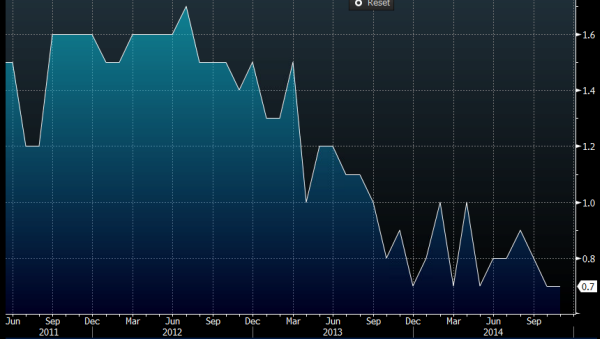Considering the moves overnight it might be a bit surprising that EUR/USD hasn’t moved again on the latest inflation numbers. The year on year numbers so far from Germany have dropped dramatically.
- Saxony 0.5% vs 0.7% prior
- Brandenburg 0.3% vs 0.7% prior
- Baden W 0.1% vs 0.5% prior
- Bavaria 0.3% vs 0.8% prior
- NRW 0.1% vs 0.7% prior
On top of that we had the Spanish flash y/y HICP back on the 30th Dec which came in at -1.1% vs -0.5% prior. It was expected to drop to -0.7%
Cyprus is also showing a massive drop today as y/y CPI comes in at -1.5% vs -0.2% In Nov.
The falls in inflation aren’t wholly unexpected given the falls in energy prices and that’s why the market is largely ignoring it after the big overnight moves. We get the EZ flash numbers on Wednesday and early expectations are for a drop into the negative to -0.1% from +0.3% y/y. That might start getting adjusted downwards if the numbers keep rolling out like they are today.
The number to watch on Wednesday will be the core inflation number. It held steady at 0.7% last month and if it drops by over 0.2 points or more then that will likely get a bigger reaction from the market. While I like to look at the core number in times like this, to see through the noise of energy price moves, it doesn’t mean we can ignore inflation just because the core doesn’t move.

Eurozone core CPI to Nov 2014
The core is good to watch when energy/commodity prices are volatile but when they are moving in a sustained way the prices will begin to filter down into the core numbers. Prices of manufactured oil or metal products won’t really change if we get temporary moves in the physicals but will if prices move over the longer term. When that happens Europe will start to really face the deflation threat. This filtering will be lagging by a few months so we may not see the effects just yet. The problem for the ECB is that by the time they are seen it will likely be to late to do anything about it.



